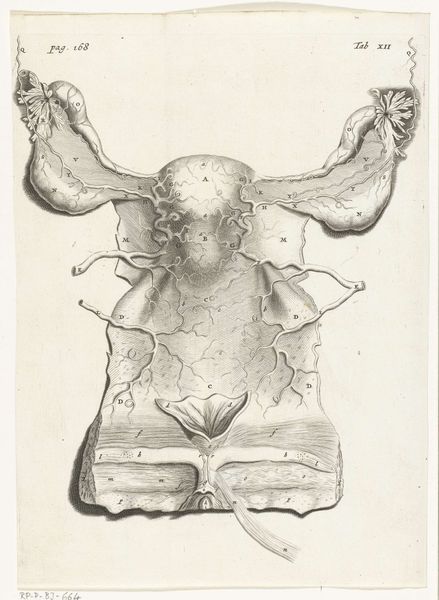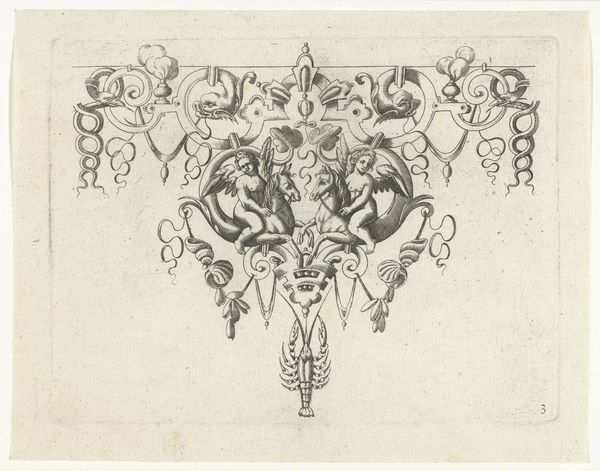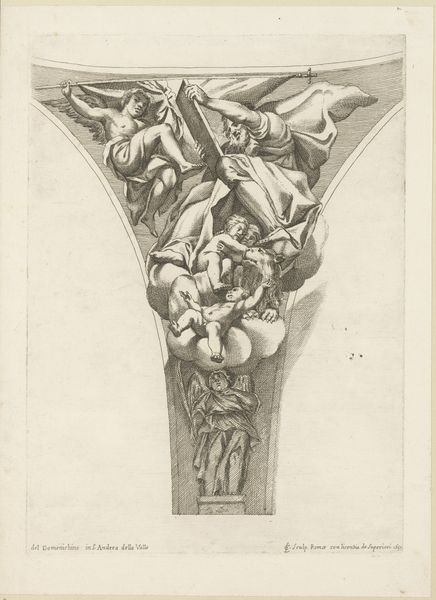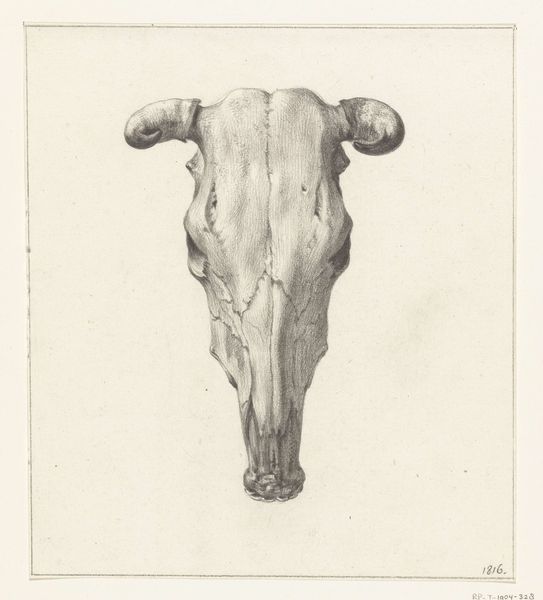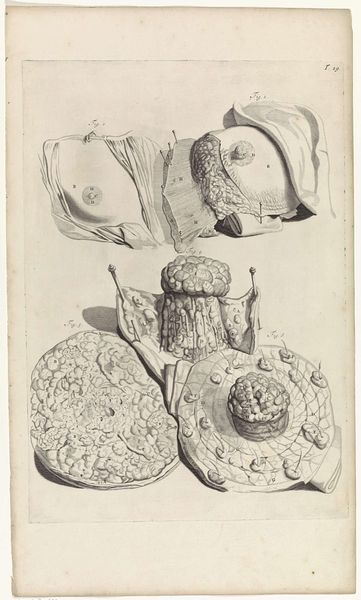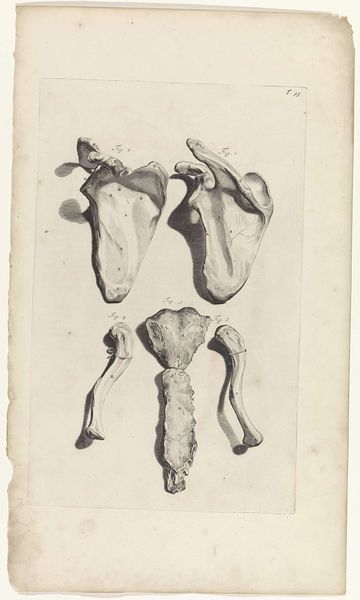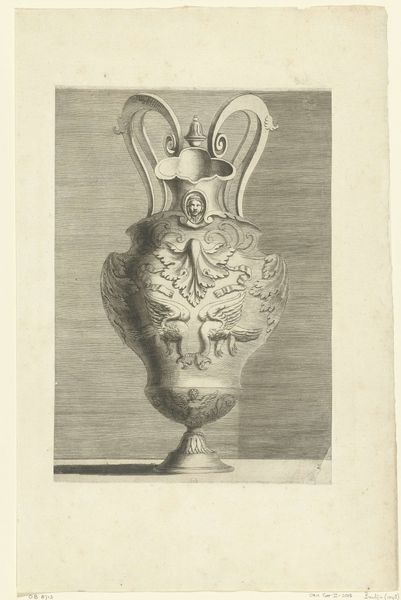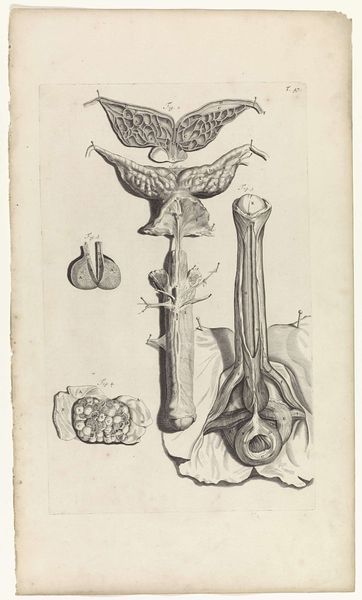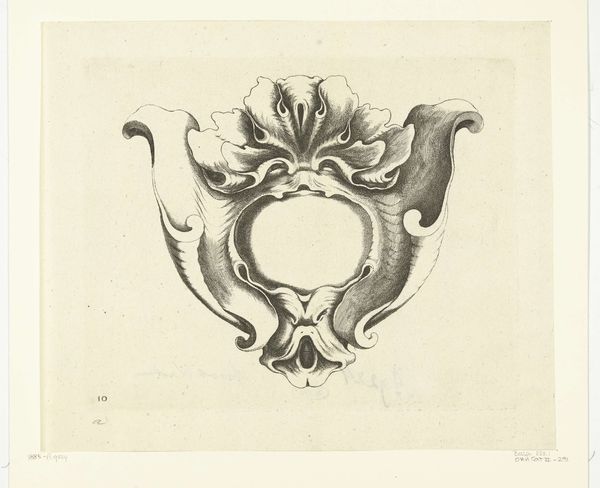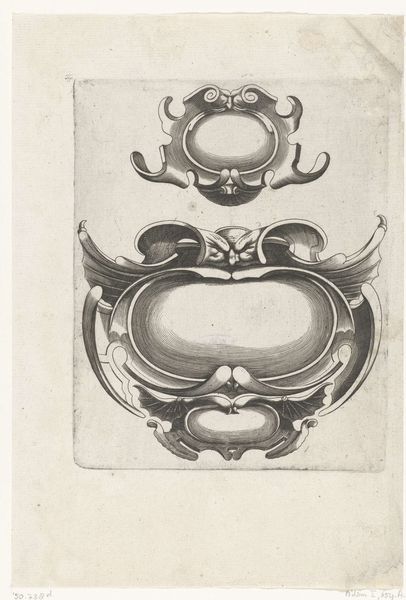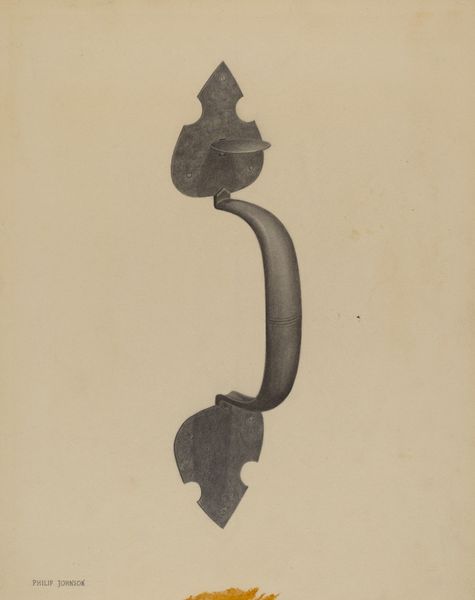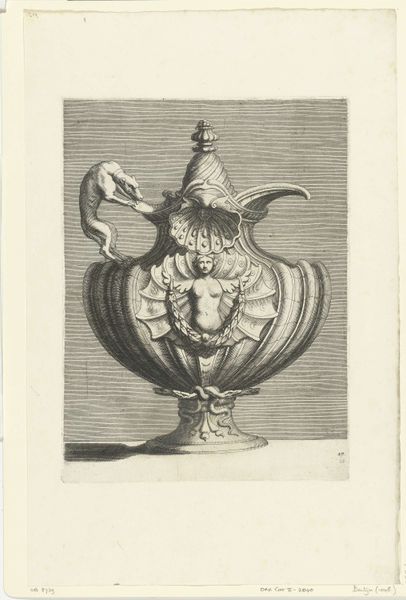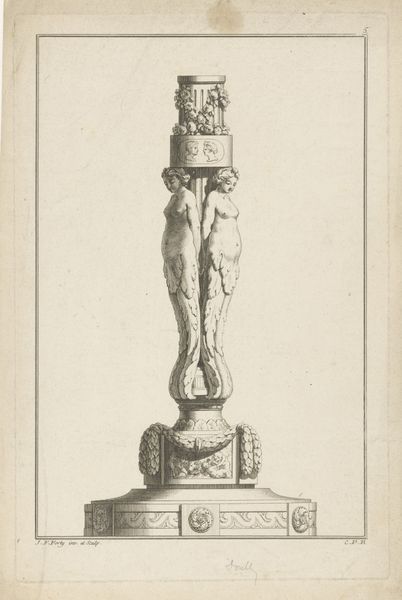
Anatomische weergave van een orgaan uit het menselijk lichaam 1732
0:00
0:00
reynierblokhuysen
Rijksmuseum
drawing, print, engraving
#
pencil drawn
#
drawing
#
baroque
# print
#
pencil sketch
#
figuration
#
pencil drawing
#
history-painting
#
academic-art
#
engraving
#
realism
Dimensions: height 200 mm, width 280 mm
Copyright: Rijks Museum: Open Domain
Editor: Here we have Reynier Blokhuysen's "Anatomische weergave van een orgaan uit het menselijk lichaam," made in 1732. It’s a print, an engraving, of a drawing of, well, a human organ. It strikes me as very clinical and precise, almost detached in its rendering. What stands out to you in terms of its formal qualities? Curator: The stark contrast immediately captures attention. Observe the intricate linework used to delineate the organ's structure against the pristine, empty space of the paper. This juxtaposition heightens the almost sculptural quality of the piece. Notice the variation in line weight; heavier contours define the external shape, while finer, more delicate lines articulate the internal details. Editor: It's fascinating how the engraver created depth using only lines and shading. I wonder, what purpose do the seemingly random letters and labels serve? Curator: These are integral to understanding the work as more than just an aesthetic object. Consider them a visual key, guiding the viewer through the various sections and intricacies of the organ. The artist directs our gaze with the labels, controlling which sections of the subject gain visual attention, shaping the reading of the whole form. Do you see how the even distribution guides the viewer across all the minute textures? Editor: Absolutely. Looking at the composition like this, the formal qualities contribute greatly to the function of communicating information with clarity. Curator: Precisely. And by considering these qualities, the work transcends pure scientific illustration and moves into the realm of artistic interpretation. It marries empirical observation with the aesthetics of representation. Editor: It definitely provides new insight, analyzing the function and technique. Curator: Indeed, an experience is more fully felt when we notice its inner mechanics.
Comments
No comments
Be the first to comment and join the conversation on the ultimate creative platform.
